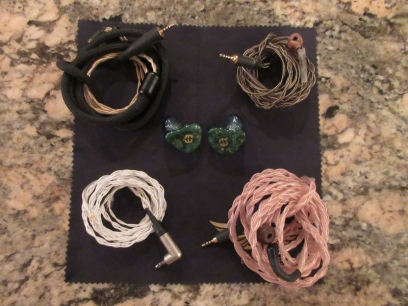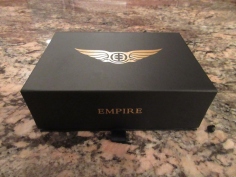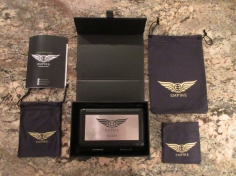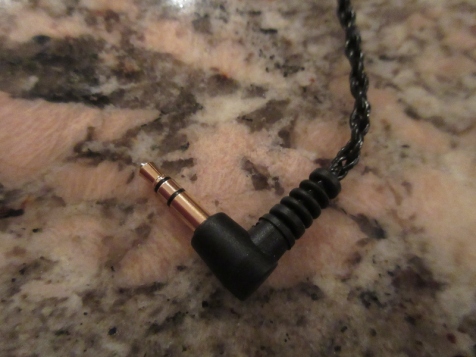The Gods have spoken! Now, it’s time to listen!
PROS: high resolution, micro-details, great transparency, expanded soundstage, lots of design customization options, premium bonus cable.
CONS: noticeable hissing with some powerful sources, premium price.
Manufacturer website: Empire Ears.
The product was provided to me free of charge for the review purpose in exchange for my honest opinion.
Intro.
New IEM/CIEM releases from well known manufacturers usually generate a lot of excitement, and often the latest model names become buzzwords without even a need to reference the company name. In a way, this reminds me of new song releases from popular artists when we anticipate hearing the next big hit. But in my opinion, the recipe of a successful hit is not only about the artist [the manufacturer] and the song [the earphone model] but also about the team of producers behind it who deserve more credit. In the last few years I was fortunate enough to get the opportunity to test and to review some of the biggest hits of headphone industry and to communicate with a number of very talented “producers” behind these releases.
Jack Vang and Dean are those hit producers, known for their previous EarWerkz hit releases, who carried over their star power to Empire Ears when EarWerkz transitioned into a new company and released the industry first 14-driver in ear monitors. I’m not going to deny it, after reviewing a number of other flagship earphones featuring anywhere from 2, 3, 5, 6, 8, 10, and 12 drivers, I mentioned in my reviews that “driver wars” are over and more drivers doesn’t mean a better sound. I was even skeptical when Jack reached out to me asking if I’m interested to give a listen to their latest variation of original Zeus-XIV named Zeus-Remastered (Zeus-R), but quickly came to my senses because curiosity got the best of me!
Obviously, everyone’s music taste is different and we all have our own subjective opinion about the sound, but I can say with certainty from my personal experience as a reviewer that Zeus-R turned out to be the closest to hit the sweet spot of my sound preference. I should probably save this for the Conclusion section of the review instead of the Intro, but after spending 2 months with Zeus-R and constantly doing a reality check by comparing it to other flagships – my honeymoon still continuous and I’m ready to share with you about Empire Ears latest TOTL hit!
Unboxing and Accessories.
For me the unboxing experience of Zeus-R started with Empire Ears logo. I absolutely love the design which has some resemblance to Bentley emblem, and I found the golden spread wings to convey a message of strength, luxury, and confidence. While so many other companies are focusing on the font type to make their name stand out, here I found Empire Ears to distinct themselves with a memorable logo design.
The product arrived in all black 7″x5″ cardboard box with a golden logo on the top magnetic flip cover and golden Empire name on the front and back sides – very formal packaging presentation. With a cover open, you will find Empire Aegis case which is weather and shock resistant T2000 model of S3 cases. Also you will find a large dust bag for this case, a small pouch bag for IEMs, and a soft cleaning cloth – all branded with a distinct Empire Ears logo. Furthermore, a quick start guide was included with some useful info about wear and care as well as headphone safety listening levels.
While the bags and the cloth had a golden logo, the case had an aluminum plate customized with an etched logo and my name below it. Inside of the case you will find a precise foam cutout for each individual earpiece, another cutout for the cable (large enough for both stock and premium bonus cable), and a narrow cutout for the cleaning tool. There was also foam lining inside of the case cover to make sure your IEMs/CIEMs don’t bounce around while on the go.
Some manufacturers pay very little attention to packaging and accessories while others go overboard with unnecessary fillers or generic cases. Here I found just a perfect balance of everything that you need to store and to transport your precious IEM/CIEM investment in a customized durable case.
Cables.
Typical of many premium IEMs/CIEMs, Zeus-R has a standard 2-pin socket and comes with a removable cable. Here I was surprised to find not only a stock cable, but also a bonus premium brand name cable included as part of standard accessories.
Though the stock cable comes with basic OFC wires, the build quality of the cable itself is very good. You have a durable right angle 3.5mm gold plated plug in a plastic housing mold with a nice grip, decent strain relief, and a design which should work with any DAP or smartphone case. All 4 conductive wires are separated, with grounds combined inside of the plug, and the cable is inner-twisted with each wire in a tight rubbery shielding. Y-splitter is typical heat shrink tubing, and chin-slider is a clear vinyl tubing piece. 2pin connectors are standard with a plastic housing mold compatible with recessed sockets, red/blue dot indicators for corresponding Right/Left sides, and a short memory wire covered by a flexible vinyl clear tube (happy to see this earhook part to be short). Overall cable is pliable and easy to manage and to store when you wrap it, and I also found no microphonics.
The bonus cable is actually brand name Silver Plated Cable (SPC) from BTG Audio, their Starlight SPC model which is sold separately for >$100. It’s definitely a nice bonus which I didn’t expect and at first even thought it was part of my review sample, but later found out it comes standard with Zeus-R.
This cable has a premium right angle headphone plug, 4-conductor design with a shielded SPC wires, a heat shrink y-splitter with BTG Audio logo on one side and EE wings logo on the other side, another piece of tube used as chin-slider, and twisted pairs of wires going to molded 2pin universal connectors with a built-in memory wire wrapped in a vinyl flexible tube. BTG actually uses annealed stainless steel for their memory wire and 2pin connectors are custom rolled nickel alloy plated in gold. These connectors have typical red/blue dot indicators for Right/Left sides and designed to be compatible with any 2pin socket, including recessed one. Overall, this is a decent cable, though I do have to mention that 4-wire braid wasn’t the tightest (maybe intentionally?) and in comparison to a stock cable you hear more microphonics. Coincidentally, BTG Audio now sells this cable with an option for a nylon sleeve over the braided part of the cable. Also, I liked the plug and it worked well with all my DAPs, but wasn’t too friendly with a thicker case of my smartphone.
I’m actually happy that Empire Ears decided to include a bonus cable. I like to talk about the effect of replacement cables in many of my IEM/CIEM reviews and to bring up if I hear any sound improvement (no hype, just sharing what and how I hear it). For many people it’s not an easy decision if they should invest into another set of cables and if extra money spent will give them a noticeable sound improvement. Here, you have nothing to lose since upgrade cable is already included, and there is a good reason why Empire Ears chose SPC cable.
I will talk in more details about sound analysis later, but in general stock cable gives you a very clear, detailed, spacious sound, but going to silver-plated cable is like flipping a high-res switch to give you more micro-details, better layering with improved sound separation, and more airiness at the top end with improved perception of soundstage width. At the same time, using this cable and PAW Gold as my source, the level of hissing went up. I suspect the higher quality wires have lower resistance which is noticeable with volume level going up a bit, and consequently less attenuation of background noise/hissing. In the sound analysis I used BTG cable as my reference, and here is how it stacks up to other cables in my review collection.
BTG to stock OFC – as mentioned above, less hissing; the overall sound remains on the same neutral revealing level with a slight mid-forward hint, but loses its micro-detail edge, becomes smoother and warmer, and loses some of the sparkle at the top end. Stock OFC cable is definitely great to consider if hissing is bothering you, though at the expense of losing some of the higher resolution details.
BTG to Whiplash TWcu – a little more hissing; I hear more sub-bass and a little more punch in mid-bass. Mids have a little more body and the sound is a little smoother and with a bit less airiness. Don’t get me wrong, the sound is still quite detailed, but lost a bit of its micro-detail sparkle.
BTG to PlusSound Apollonian+ – a little more hissing; I hear a little more rumble in sub-bass, while mid-bass is the same. Mids are nearly the same, maybe a touch smoother. Treble lost just a bit of airiness, not as much as TWcu, but now it’s somewhere between BTG and TWcu. At the same time, the sound still retained its level of micro-details.
BTG to Whiplash TWau – the same level of hissing; definitely hear more sub-bass with a nice textured rumble and a little more impact in mid-bass punch. Mids are nearly the same, and so does the treble, where I still hear the hi-res micro-detailed level of sound, but just a touch smoother. Overall the sound is a little more balanced, especially with improvement in lower end quantity which adds a bit of organic warmth to the sound.
If I would have to choose the replacement cable for Zeus-R, per my personal preference, I would go for TWau cable. As a matter of fact, I’m going to permanently switch to use it with Zeus-R. BTG SPC cable is great if you are ok with a more neutral bass and a little forward mids performance with extra sparkle in treble. But if you want a more balanced sound with a deeper bass extension and improvement in low end impact – TWau was my favorite pair up with Zeus-R.

PlusSound Apollonian+, Whiplash TWau, Whiplash TWcu, BTG Starlight.
Design.
Before I get into the actual design of this re-mastered Ruler of Olympian Gods, let me first talk about EE Designer web tool. For those who are not ready to make Custom commitment or who have issues with in-ear impressions, you have a choice of Universal fit models where you can select ready-to-ship version (without customization) or made-to-order version (with full customization). Ready-to-ship will be a great option for those who have no patience to wait for Customs and don’t care about customization. This applies to all of their 2, 3, 4, 6, 8, 10, and 14 driver Empire Ears models. For Custom fit, you go straight into full customization and have to send in your in-ear impressions from audiologist.
The online Designer is very easy to navigate and every selection has a clear image with a name of the color/finish which pops up as you mouse over it. Once you click on the selection, it gets reflected on the screen to display the finished view of the IEM/CIEM design which is close to a real thing. The selection of colors and finishes was quite impressive. You get 25 color choices for the shell, and I’m sure you can ping Jack if you want something custom. Then, for a faceplate you get 25 standard colors (in translucent and opaque finish), 18 premium exotic materials (at additional cost), and even a couple of limited edition special finishes (mine came with Amethyst Jade Burl faceplate and Translucent Emerald shell). The faceplate can be personalized further with predefined EE logo/wings or a custom logo. Plus, if you have something different in mind, EE team will be happy to look into your request.
With my review unit being their TOTL 14xBA driver model, Zeus-R drivers have 6 highs, 6 mids, and 2 lows. But the actual partitioning is done in 4 groups of highs, mids, mid-highs, and lows, with each group going to their individual precision ported sound bore in the nozzle. What I found to be especially clever was EE application of patent-pending nano magnetic coating which not only protects drivers from moisture and other elements, but also shields each driver to eliminate the interference. Though each driver operates in its specific range, thanks to an advanced 8-way crossover system which eliminates the need for filters and dampeners (in comparison, original Zeus-XIV utilizes 7-way crossover), this nano-magnetic coating also shields each driver’s magnetic field.
To make sure entire electrical signal path is pure and has maximum conductivity, internally EE uses 7-strand SPC litz wires AND ultra-pure quad-eutectic silver solder. Two pin sockets are recessed for security of the connection. Every detail of the design is calculated to yield the maximum sonic performance of their 14-driver flagship. One thing that puzzled me a bit was the size of the shell which I found to be on a larger size. Of course, we are talking about 14 drivers, advanced crossover, and internal shielded wiring, but I still noticed some empty pockets of space while looking through the translucent shell. Either way, the shell will be sticking out a bit from your ears, and I just assume this was the most optimal design Jack and Dean came up with.
Overall, the build of the shells was done to perfection with a smooth glass-like finish, not even a single spot of blemish, and with seamless integration of faceplate where you can’t even feel the joint. The special edition Jade Burl faceplate looked very luxurious, making Zeus-R stand out from my other iems/ciems. The details of the design and the build quality definitely demonstrate a high level of craftsmanship by Empire Ears team, and you can find more of their masterpieces at http://www.empireears.com/gallery/.
The Fit.

Page 2: Sound Analysis, Comparison, Pair up, and Conclusion.



























I wish you compared the Zeus R with any JH TOTL
LikeLike
Me too! Hopefully, in a near future I will try to get some JH iems for review 🙂
LikeLike
Nice review and thanks for the comparison with other IEMs. The ‘analog’ bass of the U12 makes it very interesting although I have ordered the U10 instead of the 12.
It would be interesting how EE will integrate ADEL on their IEM’s.
LikeLike
How do these compare to the legacy x?
LikeLike
Sorry, I had these on loan almost 2 years ago, can’t compare it by memory. But for sure the sound sig was completely different.
LikeLike
Hi Twister6, if you had to pick a single ciem/iem from what you have tested and reviwed with £3k budget, which would you choose? Thanks Tom
LikeLike
Everybody has their own favorite, based on their sound preference. I talk to so many people who share with me their favorites, some of which I can’t listen to for more than 5min LOL!!! It’s all a matter of a personal taste. For me personally, it’s a toss between 64 Audio U18t and Oriolus Mellianus.
LikeLike